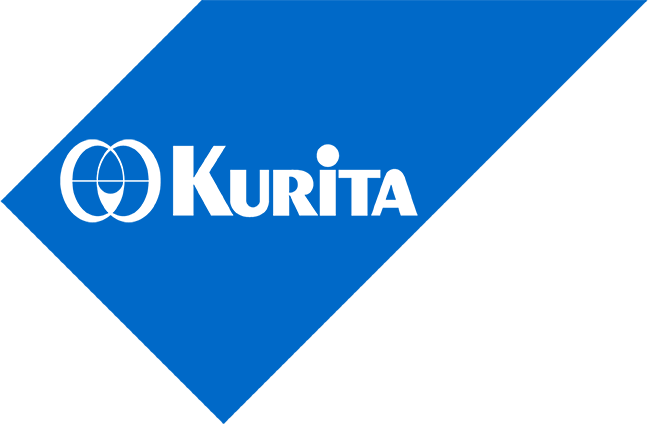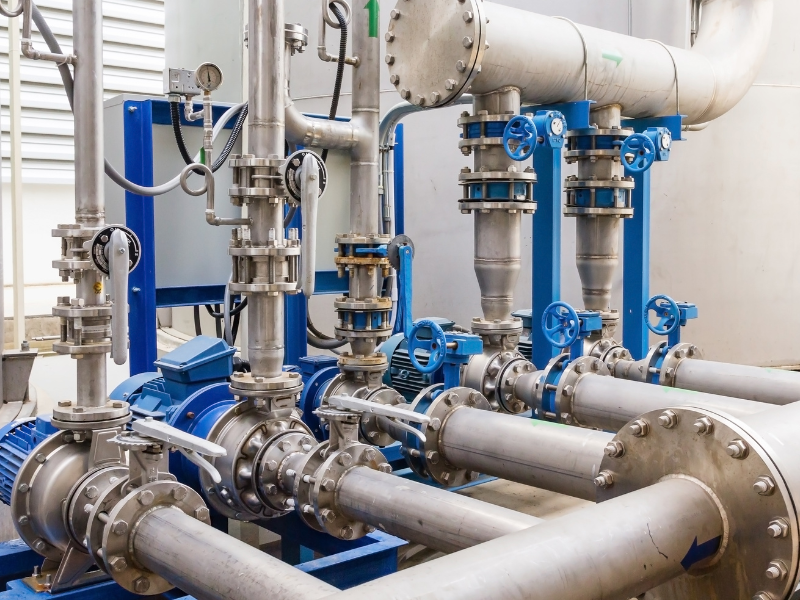Featured on Water Technology
A global manufacturing company producing fiberglass insulation was constantly reusing their water. Creating fiberglass is a process involving small glass particles heated to their melting point before passing through a spinner, which creates the fibers of glass. After this process, cooling is necessary requiring a large volume of water. For this cooling process, the plant uses a closed loop system of water held in open air tanks. This water, around 20,000 gallons, is closely monitored by staff.
Part of the monitoring done by facility staff is the solids buildup that occurs due to this water reuse. When the measured solids become too high, the system is drained and refilled with fresh water. The longer the facility can run before having to drain and refill the system, the more cost effective and efficient it is. This system as a whole is known as the WEP water system.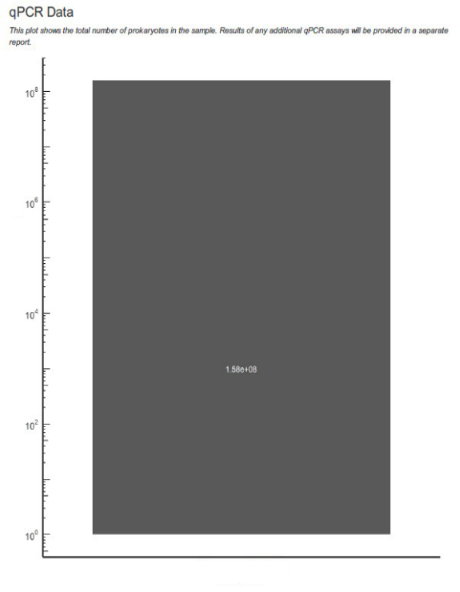
As Kurita was already onsite for other water treatment systems, the manufacturing plant asked Kurita for a consultation on dealing with the solids in the WEP system. During this evaluation, a test came back positive for high bacteria counts (1.6 x 108 cells per milliliter (mL)). These counts are very high for cooling water; for reference, 105 is considered aggressive bacteria growth. The sample showed that this system supported a well-established bacterial community. This community included pathogenic Legionella bacteria at a concerning level. Furthermore, the established bacteria was made up of several different types that could be harmful to the system. This system with warm water and solids provided a perfect environment for bacteria to thrive.
There were a couple main concerns with the high bacterial count in the WEP process water. First, the high quantity of Legionella bacteria was a safety concern for facility employees working in the area. The WEP system water is stored in open top capture tanks exposed to the atmosphere. In another area above the tanks, the water cascades down grates before collecting in troughs and being directed into the tanks below. This can aerosolize the bacteria-laden water, allowing it to be potentially inhaled by passing employees. Once inhaled, it can lead to Legionnaires’ Disease in at-risk individuals.
Secondly, as mentioned before, the solids buildup in the water was a big concern. The bacteria found in the WEP water contained species of iron-reducing, acid-producing, iron-oxidizing, etc., which can contribute to increased corrosion rates in water systems due to their ability to eat away at metal surfaces. Corrosive pitting and low pH can become concerns if these bacteria are left untreated.
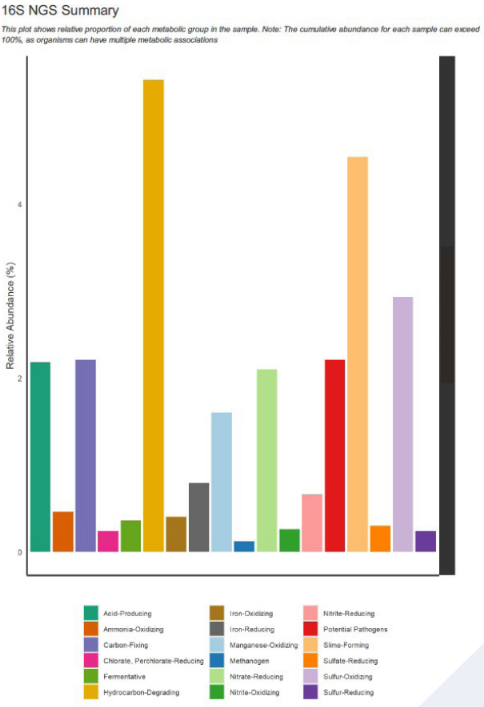
Thirdly, established bacterial communities often form biofilms or structures composed of polysaccharides, DNA, solids, and bacteria in order to attach to surfaces. Biofilms can protect bacteria from exposure to disinfection. Biofilm formation increased the solids issue in the WEP system as biofilms captured and conglomerated the fiberglass solids. In turn, this caused the water in the WEP system to need to be refreshed every seven to ten days. The wide variety of bacteria found within the water sample supported a robust biofilm and led to increased corrosion throughout the system.
As the current water treatment provider, Kurita investigated and trialed multiple chemical treatment options to solve the bacteria problem in the WEP water system. Some chemistries created too much of an odor, which was problematic for employees as some had job tasks close to the cascading water. Other chemistries were not stable due to the high temperature occurring in the system. Other chemicals, like hydrogen peroxide, are such a strong oxidizer that it was quickly used up and/or not able to penetrate the extensive biofilm that had developed. To solve the multiple obstacles, Kurita and the customer explored the option of a monochloramine generator.
Monochloramine has long been used in multiple applications for disinfection of water. Most notably, it is used as an alternative to chlorine in municipal drinking water. Although a weaker oxidizer than chlorine, monochloramine has the advantage of being more stable, resulting in it being effective for a longer period of time while also having less odor.
A bypass line was installed by facility staff on the WEP system loop (influent from higher pressure, effluent to lower pressure side). The monochloramine generator was set up by Kurita with two containment tanks for each of the precursor chemistries required for operation.
Once installed, the monochloramine system fed based on timed settings. By feeding monochloramine twice daily, the residual rose to a high of five parts per million (ppm), which was a substantial dose with the goal to get the bacteria in the WEP system under control. Weekly tests of the residual made sure we were maintaining our monochloramine parameters. By testing the residual at different times of the day, Kurita established daily treatment parameters.
After a month of solid runtime, Kurita collected another water sample for comparison with pre-treatment results. This sample showed that monochloramine was highly effective in treatment of the WEP system. Implementing a monochloramine generator extended water run times up to eight weeks and created a bacteria-free system that is safe for employees.
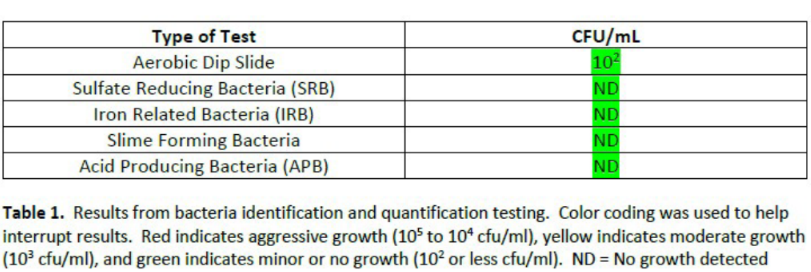
By Kurita implementing a monochloramine generator for the WEP water system, the facility was able to resolve the safety concern for employees working in the area without creating a chemical odor or affecting product quality. They were also able to save on operational costs by extending how long they could run on the water before having to refresh it. Throughout working closely with facility staff, Kurita was able to understand the facilities needs and concerns, shed light on how the high bacterial counts were affecting the performance of the system, and formulate a solution that met system needs in a cost-effective way.
